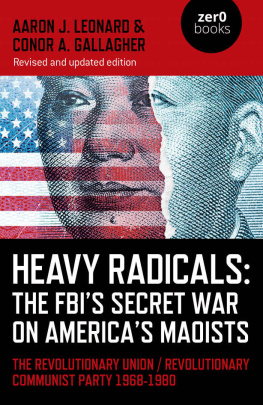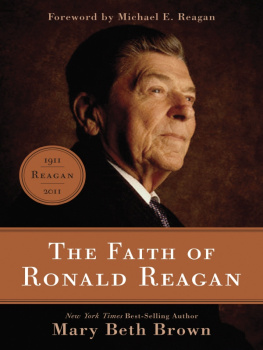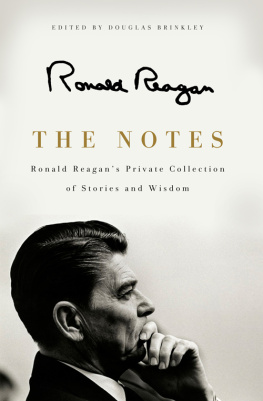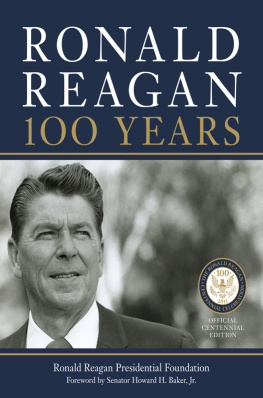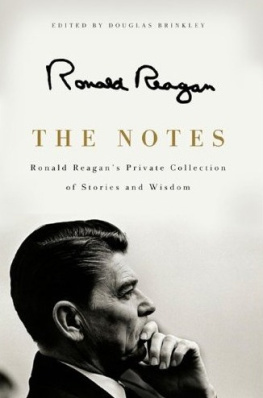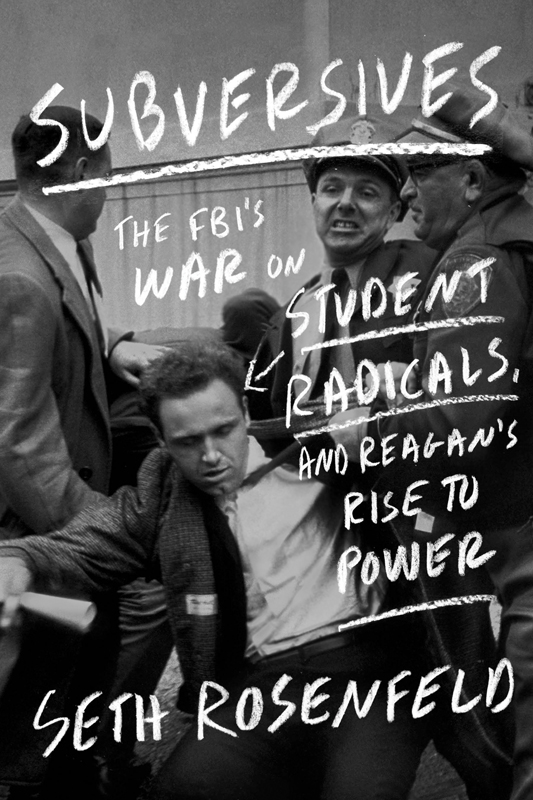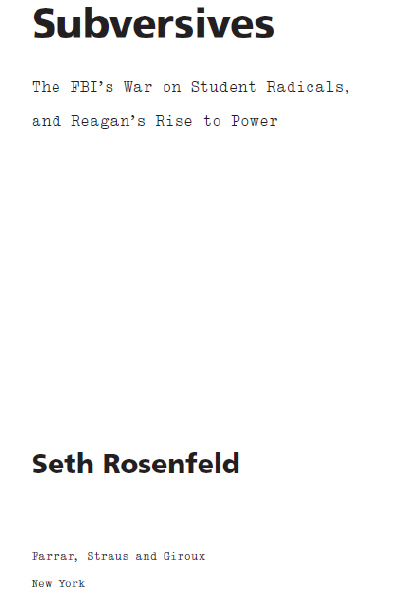
For my teachers
For my parents
For Heidi
The most beautiful thing in the world is the freedom of speech.
Mario Savio, quoting Diogenes
The university is not engaged in making ideas safe for students. It is engaged in making students safe for ideas.
Clark Kerr
Obey the prescribed rules or pack up and get out.
Ronald Reagan
This presents the bureau with an opportunity
J. Edgar Hoover
Contents
Preface
This book is a work of narrative nonfiction. It is based primarily on confidential FBI files that the bureau released to the author only after a lengthy legal fight under the Freedom of Information Act. Many pages were disclosed for the first time, including those concerning the surveillance of law-abiding citizens and efforts to disrupt political organizations. Many others were reprocessed to release additional information, such as the names of people Ronald Reagan informed on. The book also draws on court records, contemporaneous news accounts, oral histories, historical works, and hundreds of interviews with activists, university administrators, politicians, present and former FBI agents, and various other officials and observers, conducted by the author over the course of three decades. There are no anonymous sources, and no fictionalized accounts. The events and dialogue recounted herein are taken directly from the record.

Prologue: A Meeting at the Governors Mansion
Curtis O. Lynum, the special agent in charge of the FBIs San Francisco field office, rang the bell by the front door of the governors mansion in Sacramento. By his side stood Glenn A. Harter, who was his top domestic security agent. They had been summoned by the new governor, Ronald Reagan.
Waiting on the portico of the century-old grand Victorian that gray Monday morning in January 1967, Lynum felt some trepidation. He admired Reagan and had looked forward to meeting him, but secrecy was crucial. He was carrying confidential information about the student protests that were disrupting the University of Californias Berkeley campus and making headlines across the country. He had intelligence about Mario Savio, who had been a leader of the Free Speech Movement and was Berkeleys most notorious campus agitator, and Clark Kerr, the president of the university.
Reagan had been sworn into office just two weeks earlier, and within days contacted the FBI and requested help with the Berkeley situation. Lynum got the call at the San Francisco field office. He immediately notified J. Edgar Hoover at headquarters and recommended against meeting with Reaganthe controversy at the university was just too politically sensitivebut the director personally ordered him to go ahead. The Boss had taken a special interest in the rising conservative star who had vowed to clean up the mess at Berkeley.
During a fiercely contested gubernatorial campaign, Reagan had seized on the problem of campus unrest and it had become his hottest issue. Back when he was in school at Eureka College, in Illinois, he had joined in a student strike, and even helped lead it, but these Berkeley protests were different. He was disgusted with the sit-ins, the strikes, and the pickets put on by the Free Speech Movement, and the drugs and sex at the dance held by the Vietnam Day Committee in a campus gymnasium to promote antiwar protests. He declared that beatniks, radicals, and filthy speech advocates were proof of a morality and decency gap at the center of the states Democratic Party. His message resonated: he won votes from citizens who saw the turbulence at Berkeley as a symbol of all that was ailing their country, an America facing threats from enemies abroad and rising taxes, racial strife, and generational conflict at home. Reagan defeated the incumbent Democrat, Edmund G. Pat Brown, in a landslide that left the states Democratic Party a wreck and instantly made Reagan a national political figure.
Hoover welcomed Reagans victory. For years, he had been frustrated by what classified FBI reports called subversive activities at the University of Californias flagship campus. Berkeley had been the kind of institution that exemplified the best of American values: Here was a public university that offered a tuition-free education rivaling those offered by Harvard, Princeton, or Yale; employed a constellation of Nobel laureates; and held many millions of dollars in government research contracts. But even as the university was helping the nation win World War II by overseeing the development of the atomic bomb, Hoovers agents were investigating Berkeley students and professors suspected of spying for the Soviet Union. In the Cold War atmosphere of the late forties and early fifties, the directors concern about the school had grown when scores of faculty members refused to sign a special loyalty oath for university employees. So far, the sixties were turning out to pose an even greater challenge to authority, with the campus generating one provocation after anotherthat vicious essay question about the FBI, the protest against the House Un-American Activities Committee at San Francisco City Hall, the Free Speech Movement, the troop train protests. The old Communist Party had been bad enough, but now there was the New Left, the hippies, the Black Panthers, and Allen Ginsberg. Hoover and Clyde Tolson, his second in command at the bureau and his most intimate companion, saw Berkeley as the vortex of a youth movement fueled by free love, drugs, and a general disrespect for authority spreading all too quickly to other campuses. Stepping up its efforts there, the bureau mounted the most extensive covert operations the FBI is known to have undertaken in any college community.
Those secret operationsand their far-ranging impact politically and culturallyare a central concern of this book.
The FBI has long denied investigating the university as an institution, and that much is true. But a legal challenge brought by this books author pursuant to the Freedom of Information Act, over the course of twenty-seven years, forced the bureau to release more than 300,000 pages of its confidential records concerning individuals, organizations, and events on and around the campus during the Cold War, from the 1940s through the 1970s. This is the most complete record of FBI activities at any college ever released. The documents reveal that FBI agents amassed dossiers on hundreds of students and professors and on members of the Board of Regents; established informers within student groups, the faculty, and the highest levels of the universitys administration; and gathered intelligence from wiretaps, mail openings, and searches of Berkeley homes and offices in the dead of night.
In court papers, the FBI maintained that its activities were lawful and intended to protect civil order and national security. But the records show bureau officials used intelligence gleaned from these clandestine operations not only to enforce the law, or to prevent violence, or to protect national security. As a federal appeals court ruled in ordering the release of the records, the bureaus activities came to focus on political rather than law enforcement aims. And as U.S. District Judge Marilyn Hall Patel found, The records in this case go [to] the very essence of what the government was up to during a turbulent, historic period of time.



